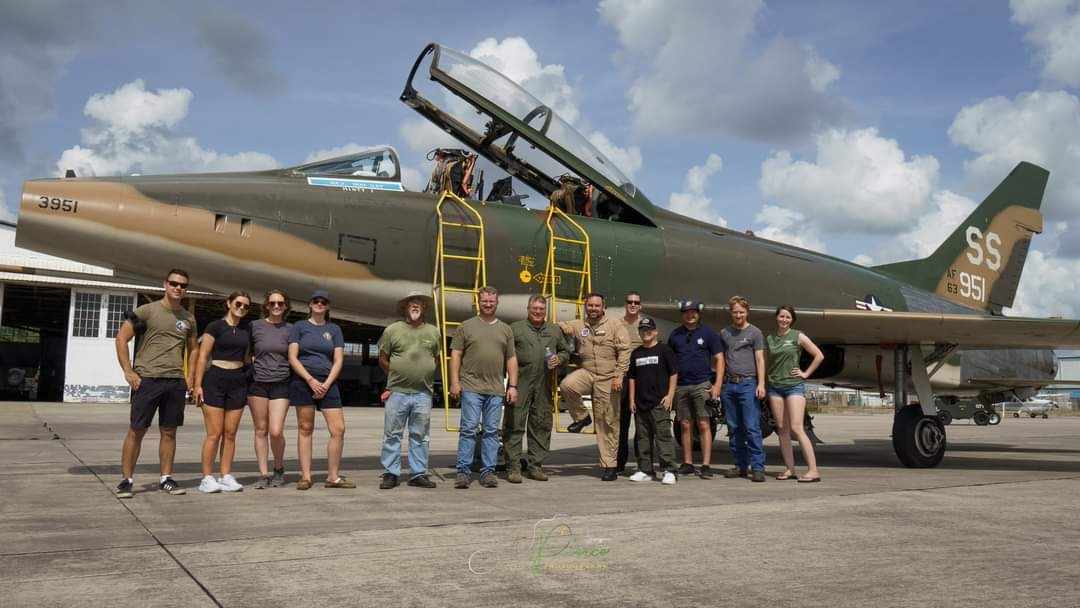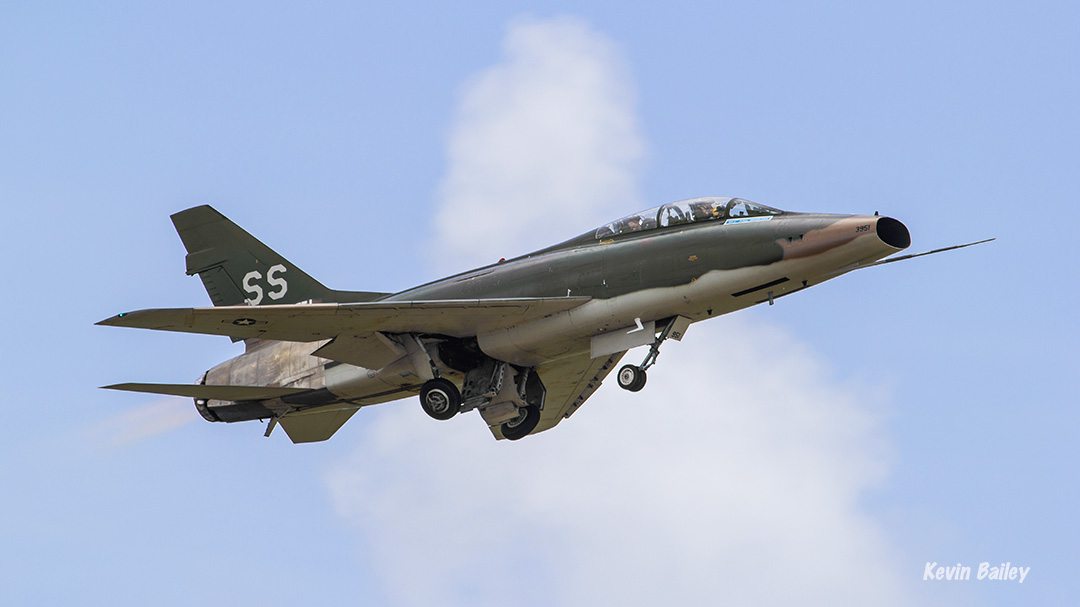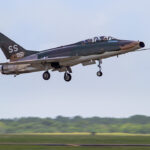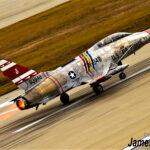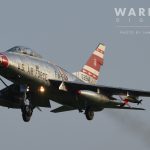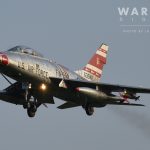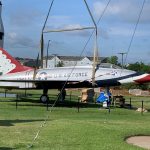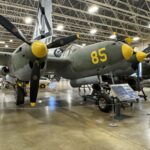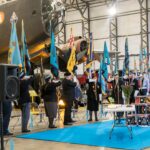The Collings Foundation’s North American F-100F Super Sabre, USAF #56-3844 (N26AZ), one of only two airworthy examples in existence ( the other one being Dean Cutshall’s beautiful F-100F), soared once again this past Saturday under the skilled piloting of Rick Sharpe, curator of the Vietnam War Flight Museum and a seasoned warbird aviator. This marked the aircraft’s first flight since late 2019, rekindling its legacy in the skies.
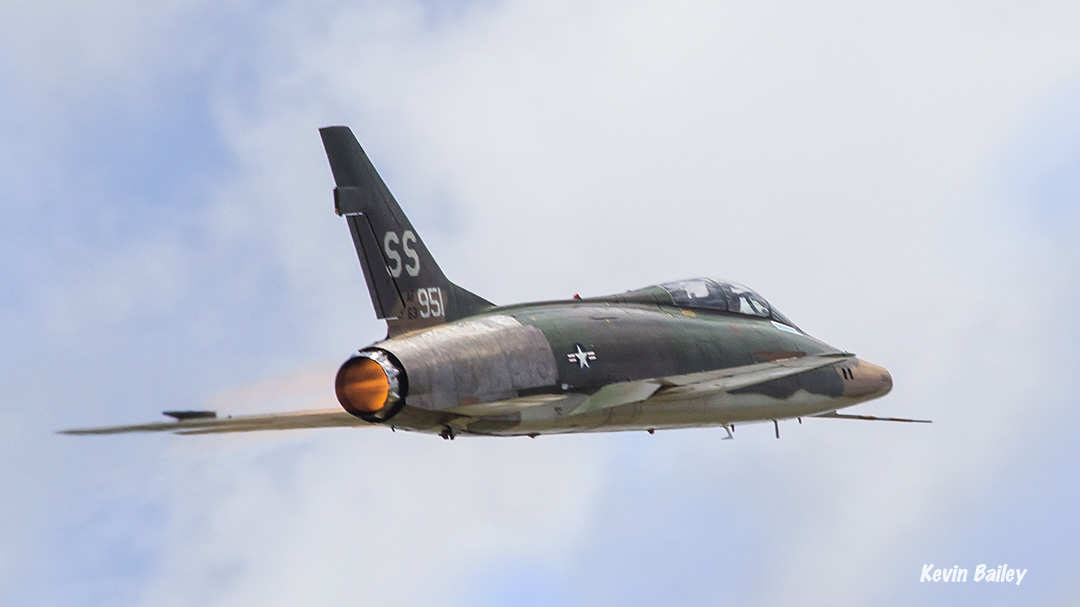
The F-100F is a two-seat variant that played a pivotal role as a “Fast FAC” or Misty FAC (forward air controller) during the Vietnam War. It undertook perilous low-level missions to identify targets for other fighter-bombers, reconnaissance, and search and rescue (SAR) operations. Notably, it was the first aircraft to serve in the “Wild Weasel” SEAD (suppression of enemy air defenses) missions. The “Hun” completed over 360,000 combat sorties throughout the Vietnam War until operations ceased in 1971.
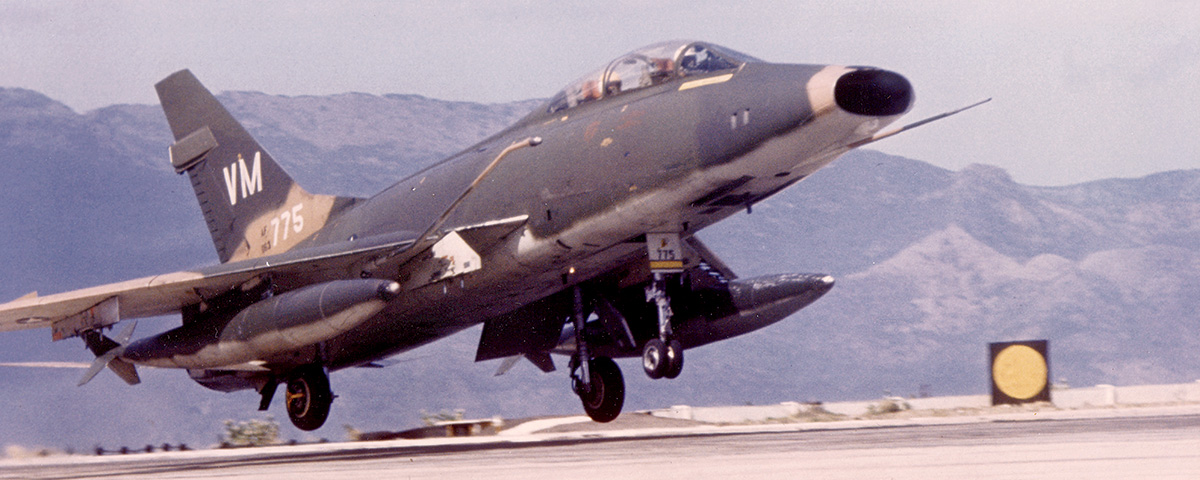
For this recent flight, longtime Collings Foundation volunteer Christopher George served as crew chief and launcher, with support from dedicated volunteers like Jordan King, Shannon Mathers, Barry Swann, Jim Firmin, and Allen Pierce. During the flight, Sharpe conducted several patterns, briefly engaging the afterburner. The team reported that the aircraft performed admirably, with no significant issues. Rick Sharpe shared with VAN: “We took it up for some airwork, high-speed runs, and stall testing. The plane flew for an hour and did fantastic.”
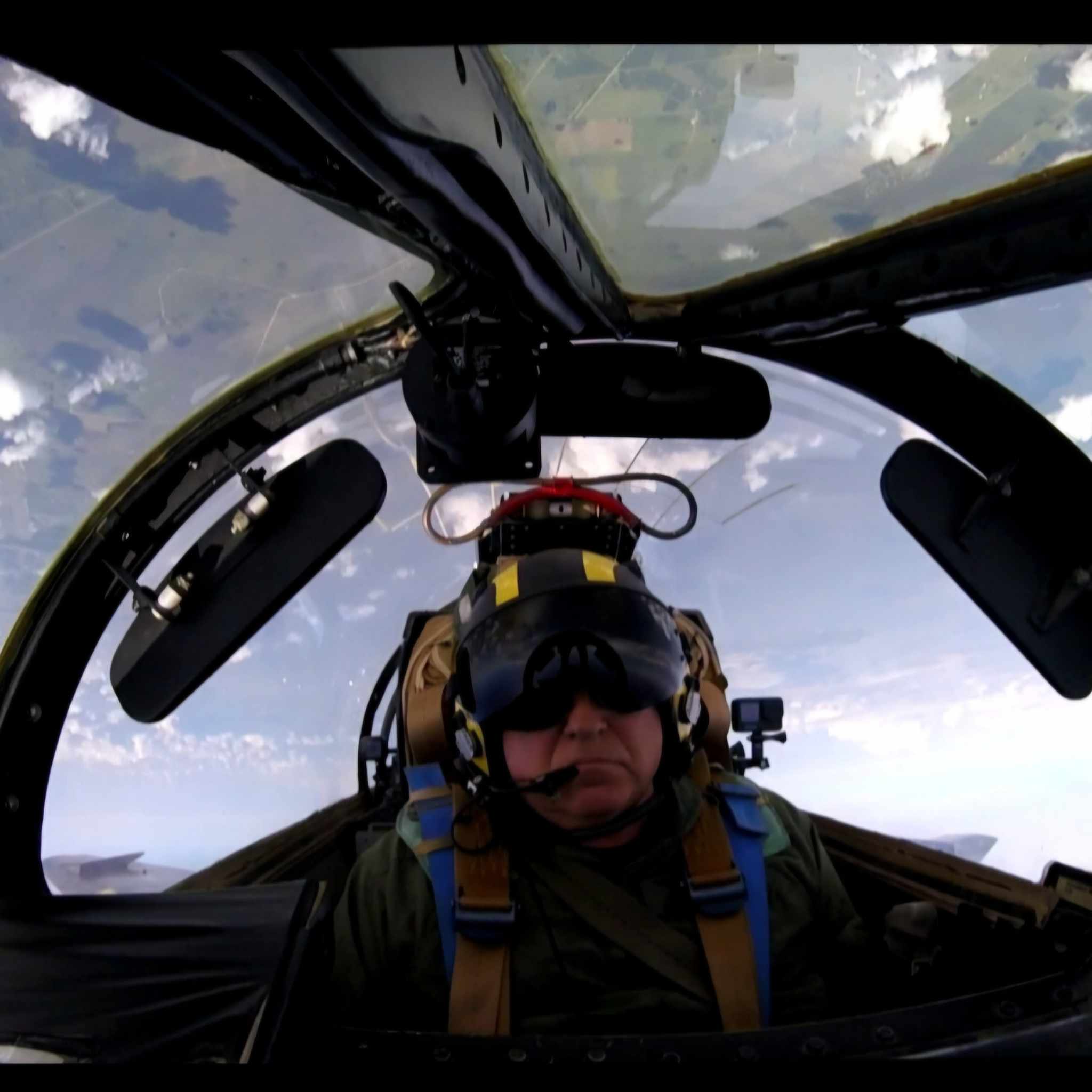
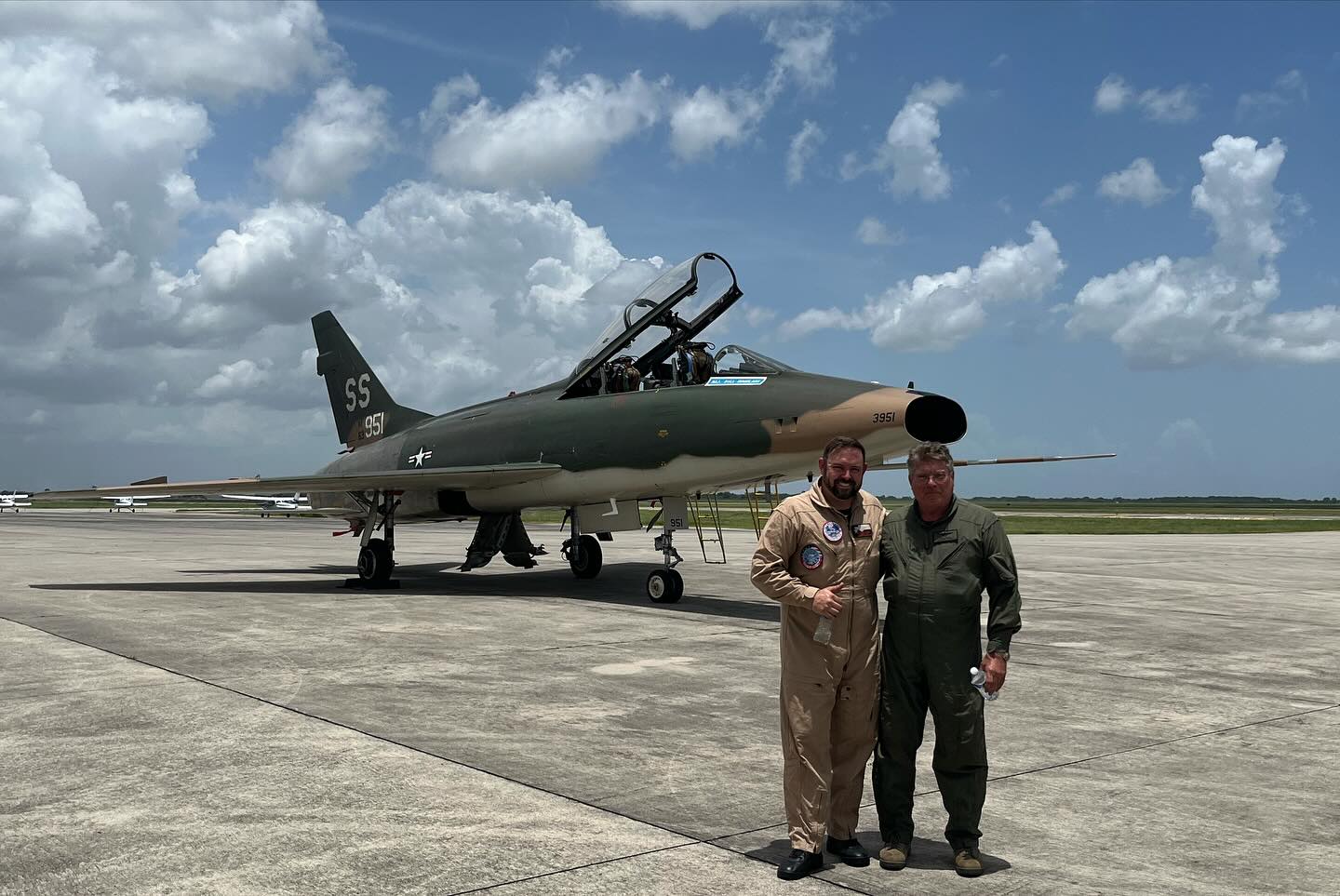
In June, the Hun was transferred to the Vietnam War Flight Museum, with the Collings Foundation’s approval, for an ADS-B installation and a thorough inspection. Much of the work was done by volunteers, with some financial assistance from Collings, including fuel costs, making it a collaborative effort to return the aircraft to the skies. The F-100’s significance is underscored by its 360,000 combat missions during Vietnam—more than any other fighter and surpassing the P-51’s mission count in World War II. The Vietnam War Flight Museum now plans to restore its A-4 and shift focus to the F-4, with Collings volunteers already working on the latter’s return to flight.
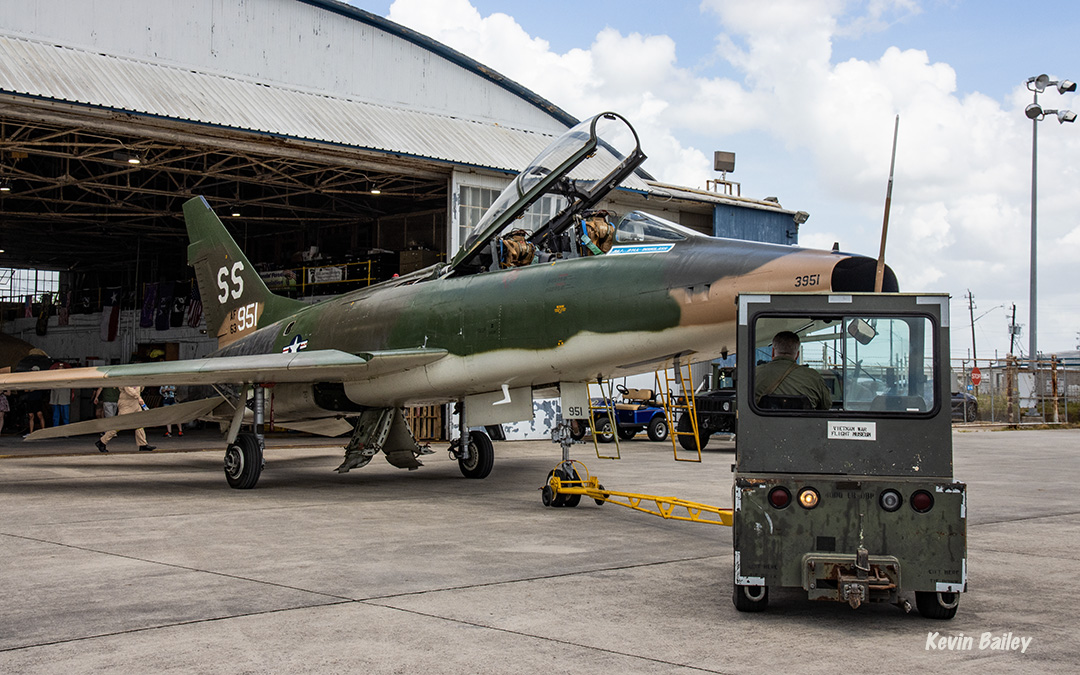
The Collings Foundation’s Super Sabre was originally delivered to the United States Air Force in November 1957. From 1958 to October 1970, it was part of the 20th Tactical Fighter Wing (TFW), primarily stationed in the United Kingdom with deployments to Libya and Turkey. In 1971, it returned to the U.S. and joined the Texas Air National Guard’s 149th Tactical Fighter Group (TFG) at Kelly AFB, San Antonio, Texas, until it was retired from USAF service in 1974. After a brief storage period, the aircraft was transferred to the Danish Air Force, serving until 1981. In 1982, it was handed over to Flight Systems Inc. and flew in the UK and Italy from 1983 to 1992. The aircraft then moved to Grecoair Inc. in El Paso, Texas, from 1997 to 2011, receiving a new paint job in New Mexico Air Guard colors, followed by Thunderbird markings.
The Foundation’s F-100F is currently painted in tribute to Medal of Honor and Air Force Cross recipient Colonel George “Bud” Day’s original F-100, which bore the name “MISTY 1.” Colonel Day is recognized as the most decorated officer in Air Force history and the most decorated American since General MacArthur.
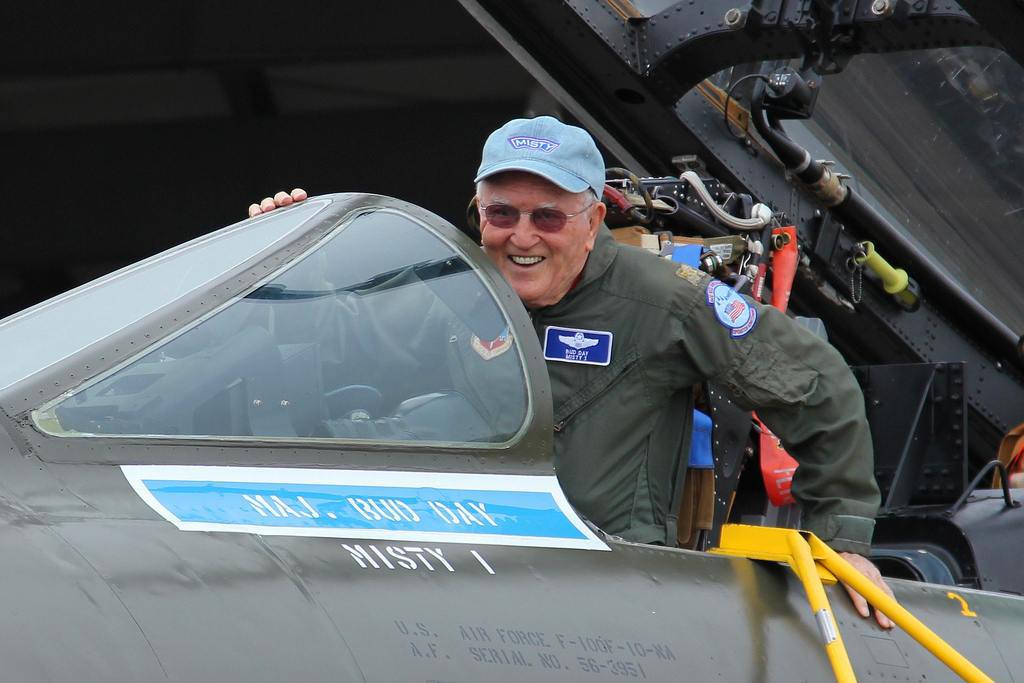
Founded in 2002 by Houston aviator Rick Sharpe, the Vietnam War Flight Museum is committed to educating the public about the service and sacrifices of Vietnam War veterans. For more information, visit www.vietnamwarflight.com.
